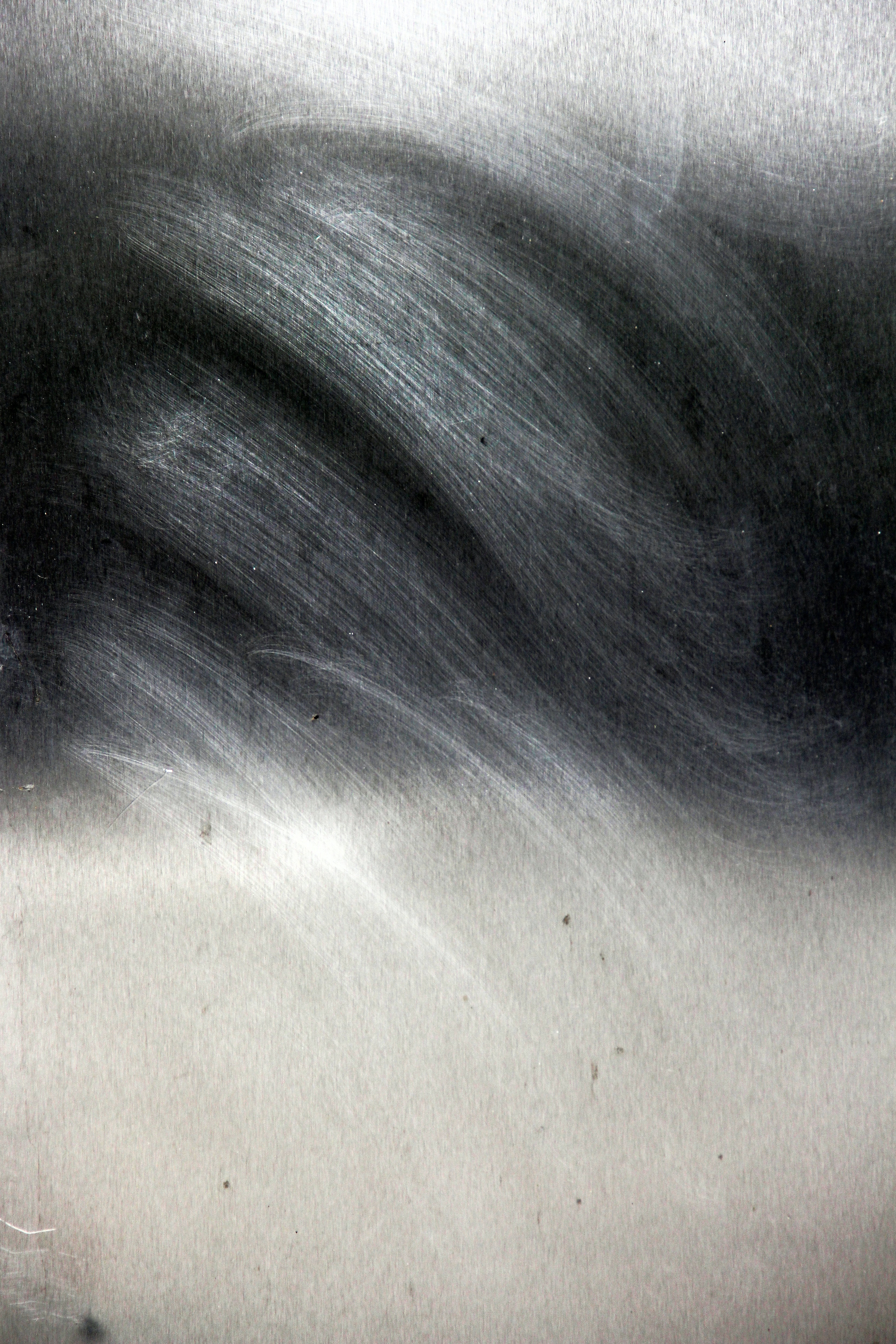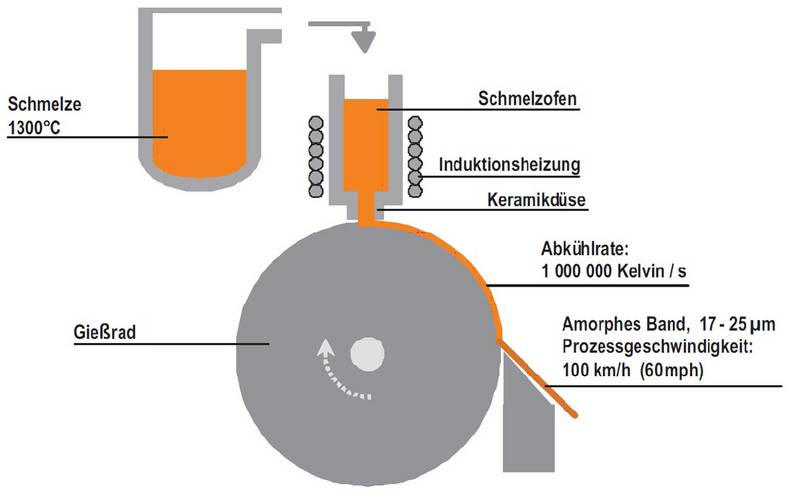Amorphous Alloys

Amorphous metals are characterized by the lack of the usual crystalline structure with grains and grain boundaries. This is of advantage for soft magnetic behavior as disturbances like crystal anisotropies or domain wall pinning at grain boundaries are simply eliminated.

They are produced in only one step from a hot melt (of about 1500 °C) to a thin metallic foil of about 25 µm thickness, with widths up to more than 200 mm. Cooling rates of about 1.000.000 K per second are necessary to avoid crystallization and to achieve the (meta-stable) amorphous condition. Furthermore “adders” like Boron or Silicon are required to reduce the velocity of the atoms in the melt when freezing the metal. Usually amorphous foils are produced by pressing the hot melt via a ceramic nozzle onto a fast rotating water-cooled copper wheel.
The thin foils are processed to toroidal or c-cores by manual or automatic core winders. In a next step the cores are “annealed” to reduce internal stresses and improve the magnetic properties. This is typically done somewhat below the crystallization temperature which is about 500 °C.
Alloy data
| Saturation Flux Density | Bs | RT | [T] | 1,56 |
|---|---|---|---|---|
| Curie-Temperature | Tc | [°C] | 399 | |
| Cristallisation Temperature | [°C] | 508 | ||
| Upper Application Temperature | [°C] | abt. 130 | ||
| Magnetostriction | λs | [ppm] | 27 | |
| Spez. Electrical Resistivity | ρel | RT | [µΩm] | 1,3 |
| Density | ρ | [g/cm³] | 7,18 | |
| Typ. Stacking Factor | FF | [%] | 82 | |
| Core Losses | PFe | (0,1T, 25 kHz) | [W/kg] | abt. 15 |
| Core Losses | PFe | (0,3T, 50 kHz) | [W/kg] | abt. 300 |